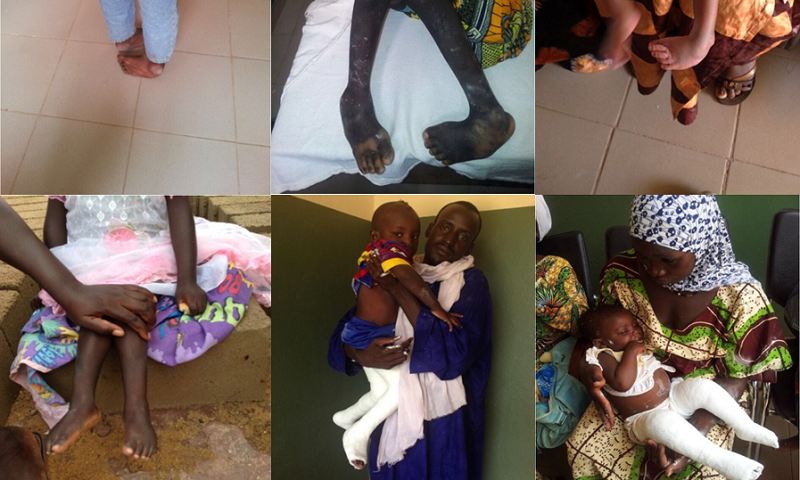
About the project
Clubfoot is a malformation of the foot. If it is not treated, the child remains handicapped for the rest of their life. In Mali, every year, 700 children are born with this malformation. The activities are supported by United Nations Women’s Guild (UNWG) with the coordination of Klumpfussprojekt Mali and Vienna, Austria.
“Club foot or clubfoot, also called congenital talipes equinovarus (CTEV), is a congenital deformity involving one foot or both. The affected foot appears to have been rotated internally at the ankle. Without treatment, people with club feet often appear to walk on their ankles or on the sides of their feet.”[1]
In 2006 the Clubfoot Project was implemented in Bamako, Mali. In the Centre Nationale d’Appareillage Orthopédique du Mali (CNAOM) a team was trained in the Ponseti method, which is a minimally invasive method that consists mainly of a series of castings.
Thanks to financial support of UNWG, 80 children from poor families successfully underwent the treatment. The results have been more than satisfactory; 95% of the corrections were successful. This initiative has encouraged many other parents to register their children for future treatment, which will help them to integrate the normal life like going to kindergarten and eventually to attend school. Thus two major objectives of the United Nations Sustainable Development Goals have been successfully implemented:
- Poverty eradication and social/economic integration:
By treating these children, the project has prevented them from falling into the cycle of poverty and at the same time prevented them from being on the streets, which remain a risk for them.
- Promotion of good health and well-being:
These children have been given chances to participate in social and mental development such as attending kindergarten and school which keeps them off the streets.
Ibrahim’s Story:
The parents of Ibrahim, 5 years old, were hopeless. They heard about the possibility to treat their son’s clubfoot at the CNAOM but they could not afford the costs for the necessary materials. Thanks to the financial support of UNWG Ibrahim was accepted to become a beneficiary of the “poor patient’s fund”. His treatment took about 7 months and he had to undergo 11 castings and a minor surgery, he had to wear braces for several weeks. At the moment he wears orthopedic shoes to finalize the correction of his feet.
Ibrahim is now a happy, healthy, and active boy that can attend school.
Lessons learned
We need to train more local partners to assist with the aftercare of problematic intensive treatments. In addition, there needs to be more support for treated children to integrate into school.
Recommendations
More experts’ training sessions are necessary to reinforce local capacities and competences.
 Welcome to the United Nations
Welcome to the United Nations